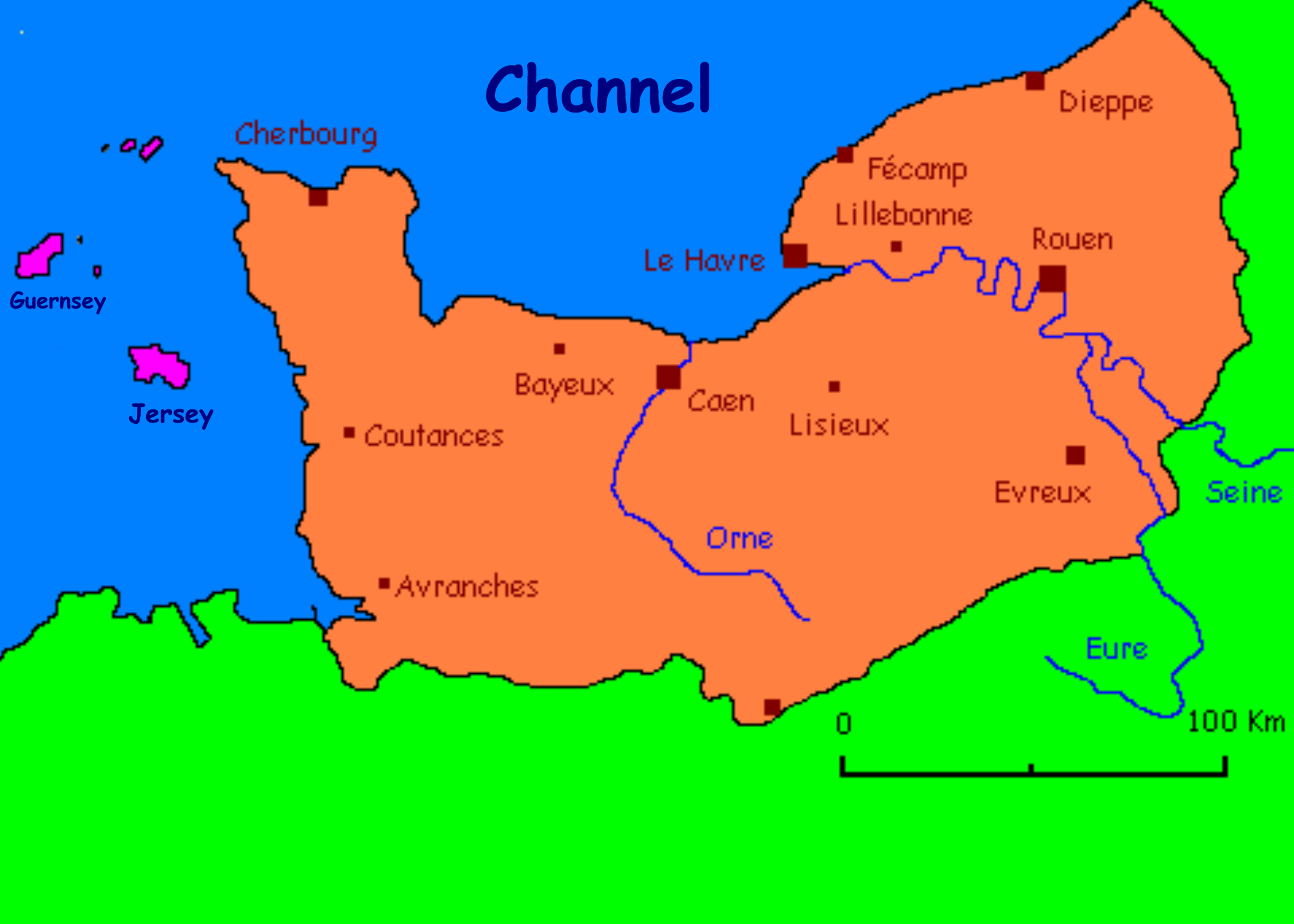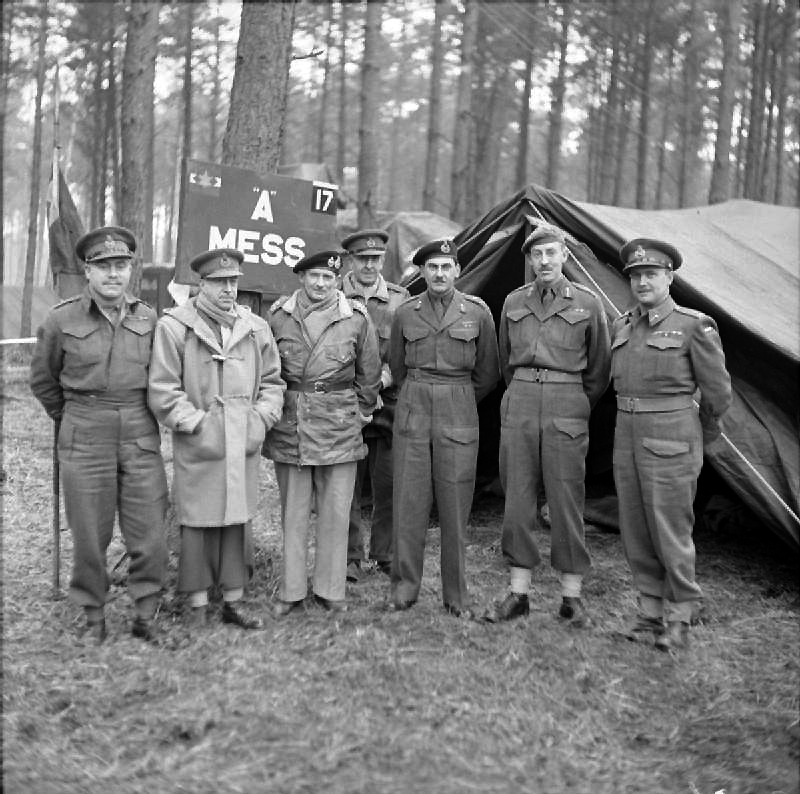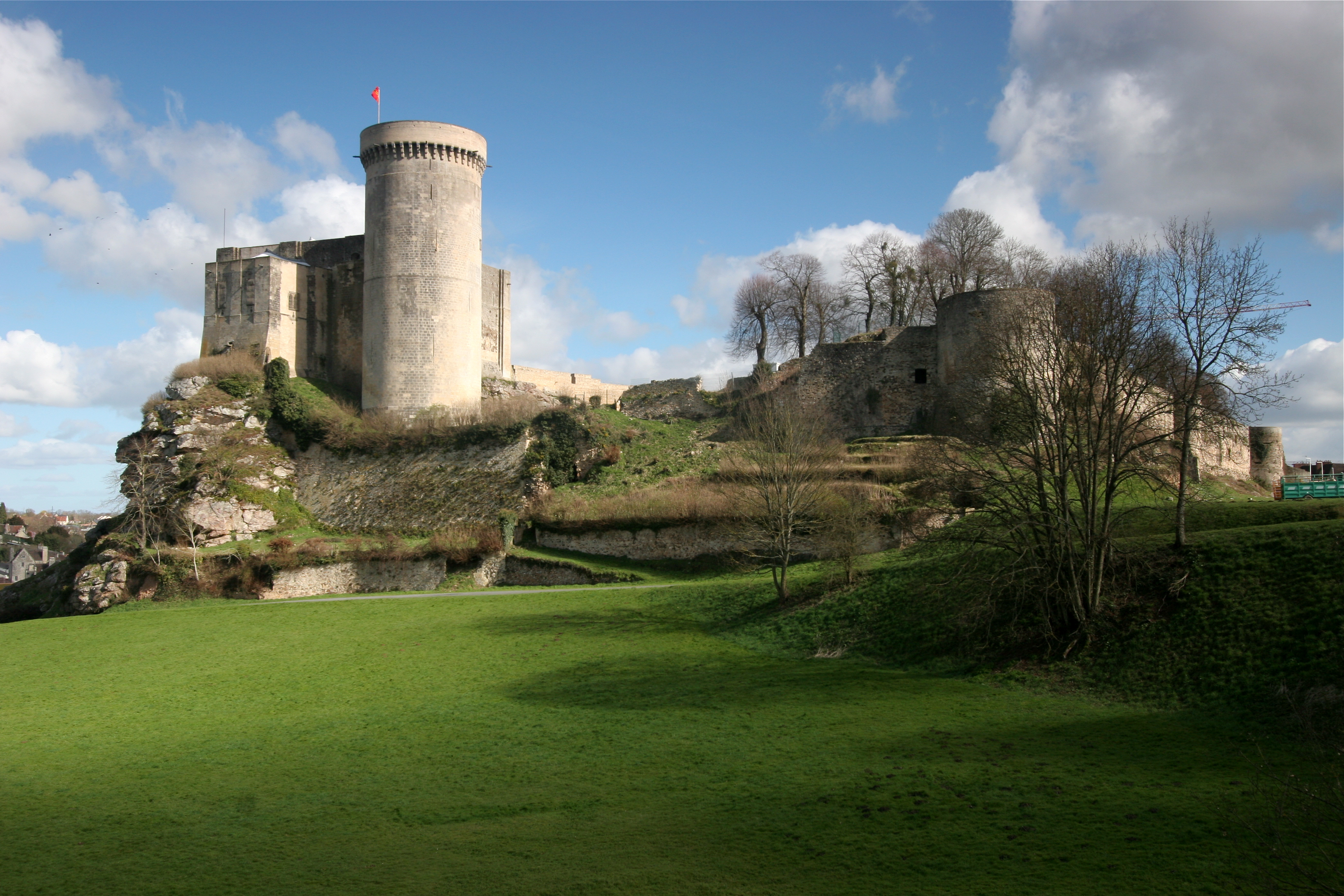|
Battle Of Verrières Ridge
The Battle of Verrières Ridge was a series of engagements fought as part of the Battle of Normandy, in Calvados, during the Second World War. The main combatants were two Canadian infantry divisions—with additional support from the Canadian 2nd Armoured Brigade—against elements of three German SS Panzer divisions. The battle was part of the British and Canadian attacks south of Caen, and took place from 19 to 25 July 1944, being part of Operation Atlantic (18–21 July) and Operation Spring (25–27 July). The immediate Allied objective was Verrières Ridge, a belt of high ground which dominates the route from Caen to Falaise. The ridge was occupied by battle-hardened German veterans, who had fallen back from Caen and entrenched to form a strong defensive position. Over the course of six days, substantial Canadian and British forces made repeated attempts to capture the ridge. Strict German adherence to defensive doctrine, as well as strong and effective counterattacks b ... [...More Info...] [...Related Items...] OR: [Wikipedia] [Google] [Baidu] |
Operation Atlantic
Operation Atlantic (18–21 July 1944) was a Canadian offensive during the Battle of Normandy in the Second World War. The offensive, launched in conjunction with Operation Goodwood by the Second Army, was part of operations to seize the French city of Caen and vicinity from German forces. It was initially successful, with gains made on the flanks of the Orne River near Saint-André-sur-Orne but an attack by the 4th and 6th Canadian Infantry Brigades of the 2nd Canadian Infantry Division, against strongly defended German positions on Verrières Ridge to the south was a costly failure. Background Operation Overlord The capture of the historic Norman town of Caen, while "ambitious", was the most important D-Day objective assigned to British Lieutenant-General John Crocker's I Corps and its component British 3rd Infantry Division, which landed on Sword on 6 June 1944.Ellis, p. 171 Operation Overlord plans called for British Second Army to secure the city and form a line from ... [...More Info...] [...Related Items...] OR: [Wikipedia] [Google] [Baidu] |
Canada
Canada is a country in North America. Its Provinces and territories of Canada, ten provinces and three territories extend from the Atlantic Ocean to the Pacific Ocean and northward into the Arctic Ocean, making it the world's List of countries and dependencies by area, second-largest country by total area, with the List of countries by length of coastline, world's longest coastline. Its Canada–United States border, border with the United States is the world's longest international land border. The country is characterized by a wide range of both Temperature in Canada, meteorologic and Geography of Canada, geological regions. With Population of Canada, a population of over 41million people, it has widely varying population densities, with the majority residing in List of the largest population centres in Canada, urban areas and large areas of the country being sparsely populated. Canada's capital is Ottawa and List of census metropolitan areas and agglomerations in Canada, ... [...More Info...] [...Related Items...] OR: [Wikipedia] [Google] [Baidu] |
Operation Charnwood
Operation Charnwood was an Anglo-Canadian offensive that took place from 8 to 9 July 1944, during the Battle for Caen, part of the larger Operation Overlord (code-name for the Battle of Normandy) in the Second World War. The operation was intended to capture the German-occupied city of Caen (), which was an important objective for the Allies during the opening stages of Overlord. It was also hoped that the attack would forestall the transfer of German armoured units from the Anglo-Canadian sector to the American sector to the west, where an offensive was being prepared. The British and Canadians advanced on a broad front and by the evening of the second day had taken Caen up to the Orne and Odon rivers. Preceded by a controversial bombing raid that destroyed much of the historic Old City of Caen, Operation Charnwood began at dawn on 8 July, with three infantry divisions attacking German positions north of Caen, behind a creeping barrage. Supported by three armoured brigade ... [...More Info...] [...Related Items...] OR: [Wikipedia] [Google] [Baidu] |
Commonwealth Of Nations
The Commonwealth of Nations, often referred to as the British Commonwealth or simply the Commonwealth, is an International organization, international association of member states of the Commonwealth of Nations, 56 member states, the vast majority of which are former territorial evolution of the British Empire, territories of the British Empire from which it developed. They are connected through their English in the Commonwealth of Nations, use of the English language and cultural and historical ties. The chief institutions of the organisation are the Commonwealth Secretariat, which focuses on intergovernmental relations, and the Commonwealth Foundation, which focuses on non-governmental relations between member nations. Numerous List of Commonwealth organisations, organisations are associated with and operate within the Commonwealth. The Commonwealth dates back to the first half of the 20th century with the decolonisation of the British Empire through increased self-governance ... [...More Info...] [...Related Items...] OR: [Wikipedia] [Google] [Baidu] |
D-Day
The Normandy landings were the landing operations and associated airborne operations on 6 June 1944 of the Allied invasion of Normandy in Operation Overlord during the Second World War. Codenamed Operation Neptune and often referred to as D-Day (after the military term), it is the largest seaborne invasion in history. The operation began the liberation of France, and the rest of Western Europe, and laid the foundations of the Allied victory on the Western Front. Planning for the operation began in 1943. In the months leading up to the invasion, the Allies conducted a substantial military deception, codenamed Operation Bodyguard, to mislead the Germans as to the date and location of the main Allied landings. The weather on the day selected for D-Day was not ideal, and the operation had to be delayed 24 hours; a further postponement would have meant a delay of at least two weeks, as the planners had requirements for the phase of the moon, the tides, and time of day, that ... [...More Info...] [...Related Items...] OR: [Wikipedia] [Google] [Baidu] |
Operation Cobra
Operation Cobra was an offensive launched by the First United States Army under Lieutenant General Omar Bradley seven weeks after the D-Day landings, during the Normandy campaign of World War II. The intention was to take advantage of the distraction of the Germans by the British and Canadian attacks around Caen in Operation Goodwood, and thereby break through the German defenses that were penning in their forces, while the Germans were unbalanced. Once a corridor had been created, the First Army would then be able to advance into Brittany, rolling up the German flanks once free of the constraints of the bocage country. After a slow start, the offensive gathered momentum and German resistance collapsed as scattered remnants of broken units fought to escape to the Seine. Lacking the resources to cope with the situation, the German response was ineffectual mainly due to the effect of Operation Bluecoat and the entire Normandy front soon collapsed. Operation Cobra, together wit ... [...More Info...] [...Related Items...] OR: [Wikipedia] [Google] [Baidu] |
Dieppe Raid
Operation Jubilee or the Dieppe Raid (19 August 1942) was a disastrous Allied amphibious attack on the German-occupied port of Dieppe in northern France, during the Second World War. Over 6,050 infantry, predominantly Canadian, supported by a regiment of tanks, were put ashore from a naval force operating under the protection of Royal Air Force (RAF) fighters. The port was to be captured and held for a short period, to test the feasibility of a landing and to gather intelligence. German coastal defences, port structures and important buildings were to be demolished. The raid was intended to boost Allied morale, to demonstrate the commitment of the United Kingdom to re-open the Western Front, and to support the Soviet Union, which was fighting on the Eastern Front. The made a maximum effort against the landing as the RAF had expected, and the RAF lost 106 aircraft (at least 32 to anti-aircraft fire or accidents) against 48 German losses. The Royal Navy lost 33 landing craft ... [...More Info...] [...Related Items...] OR: [Wikipedia] [Google] [Baidu] |
The Black Watch (Royal Highland Regiment) Of Canada
The Black Watch (Royal Highland Regiment) of Canada is a reserve infantry regiment in 34 Canadian Brigade Group, 2nd Canadian Division, of the Canadian Army. The regiment is at 2067, rue Bleury (2067, Bleury Street) in Montreal, Quebec, Canada, and is currently commanded by Lieutenant-Colonel R.M. Unger. The regiment's armoury was designated a National Historic Site of Canada in 2008. They are the senior Canadian-Scottish Regiment. Lineage and history File:RHC Regt Colour.jpg, The regimental colour of The Black Watch (Royal Highland Regiment) of Canada. File:RHC Camp Flag.jpg, The camp flag of The Black Watch (Royal Highland Regiment) of Canada File:Black Watch (Old Campbell) tartan, tileable.png, Black Watch tartan, also known as the "Government sett". Volunteers have served since the regiment's inception in Montreal on 31 January 1862, as the 5th Battalion, Volunteer Militia Rifles of Canada. The rise of American military strength during their Civil War concerned Canada ... [...More Info...] [...Related Items...] OR: [Wikipedia] [Google] [Baidu] |
First Canadian Army
The First Canadian Army () was a field army and a formation of the Canadian Army in World War II in which most Canadian elements serving in North-West Europe were assigned. It served on the Western Front from July 1944 until May 1945. It was Canada's first and, so far, only field army. The army was formed in early 1942, replacing the existing unnumbered Canadian Corps, as the growing contribution of Canadian forces to serve with the British Army in the United Kingdom necessitated an expansion to two corps. By the end of 1943 Canadian formations consisted of three infantry divisions, two armoured divisions and two independent armoured brigades. The first commander was Lieutenant-General A. G. L. "Andy" McNaughton, who was replaced in 1944 by General H. D. G. "Harry" Crerar. Both had been senior Royal Regiment of Canadian Artillery officers in the Canadian Corps in World War I. Allied formations of other nationalities were added to the First Canadian Army to keep it at full st ... [...More Info...] [...Related Items...] OR: [Wikipedia] [Google] [Baidu] |
Falaise, Calvados
Falaise () is a Communes of France, commune in the Calvados (department), Calvados Departments of France, department in the Normandy (administrative region), Normandy Regions of France, region in northwestern France. The town is famous for being the birthplace of William I of England, William the Conqueror. It was also the centre of the area known as the Falaise pocket, the decisive engagement of the Operation Overlord, Battle of Normandy in the World War II, Second World War. Geography Falaise lies at the eastern edge of the Armorican Massif, and the town has rocky outcrops on its edges such as the 173 metre high Mount Myrrha. The commune is spread over an area of with a maximum altitude of and minimum of Flowing through Falaise are the river Ante (river), Ante and the river Trainefeuille, both tributaries of the river Dives (river), Dives. Falaise borders the area known as Norman Switzerland, Suisse Normande, on its eastern side. Land distribution According to the 20 ... [...More Info...] [...Related Items...] OR: [Wikipedia] [Google] [Baidu] |
Allies Of World War II
The Allies, formally referred to as the United Nations from 1942, were an international Coalition#Military, military coalition formed during World War II (1939–1945) to oppose the Axis powers. Its principal members were the "Four Policemen, Big Four" – the United Kingdom, United States, Soviet Union, and Republic of China (1912–1949), China. Membership in the Allies varied during the course of the war. When the conflict broke out on 1 September 1939, the Allied coalition consisted of the United Kingdom, French Third Republic, France, and Second Polish Republic, Poland, as well as their respective Dependent territory, dependencies, such as British Raj, British India. They were joined by the independent dominions of the British Commonwealth: Canada, Australia, Dominion of New Zealand, New Zealand and Union of South Africa, South Africa. Consequently, the initial alliance resembled Allies of World War I, that of the First World War. As Axis forces began German invasion of ... [...More Info...] [...Related Items...] OR: [Wikipedia] [Google] [Baidu] |
United Kingdom
The United Kingdom of Great Britain and Northern Ireland, commonly known as the United Kingdom (UK) or Britain, is a country in Northwestern Europe, off the coast of European mainland, the continental mainland. It comprises England, Scotland, Wales and Northern Ireland. The UK includes the island of Great Britain, the north-eastern part of the island of Ireland, and most of List of islands of the United Kingdom, the smaller islands within the British Isles, covering . Northern Ireland shares Republic of Ireland–United Kingdom border, a land border with the Republic of Ireland; otherwise, the UK is surrounded by the Atlantic Ocean, the North Sea, the English Channel, the Celtic Sea and the Irish Sea. It maintains sovereignty over the British Overseas Territories, which are located across various oceans and seas globally. The UK had an estimated population of over 68.2 million people in 2023. The capital and largest city of both England and the UK is London. The cities o ... [...More Info...] [...Related Items...] OR: [Wikipedia] [Google] [Baidu] |







